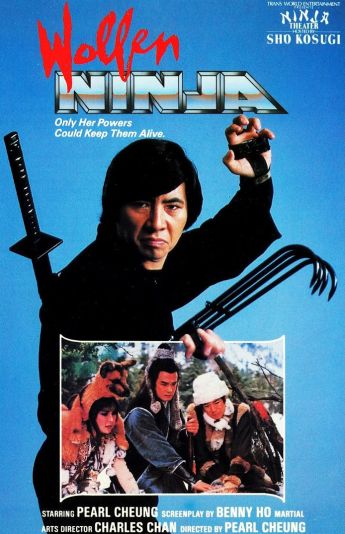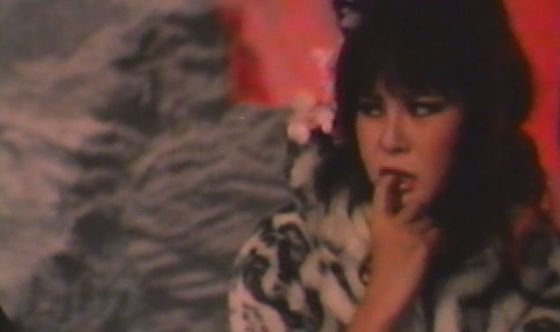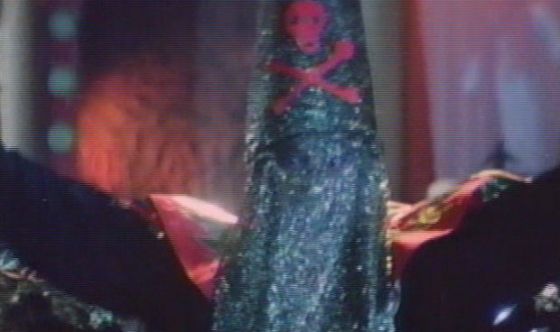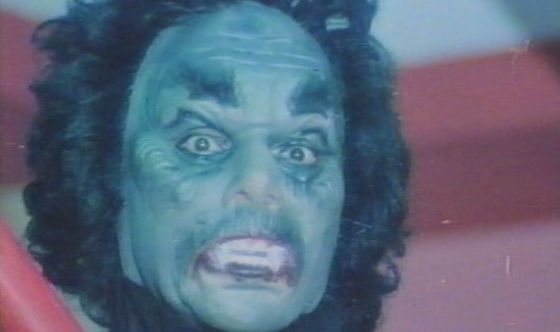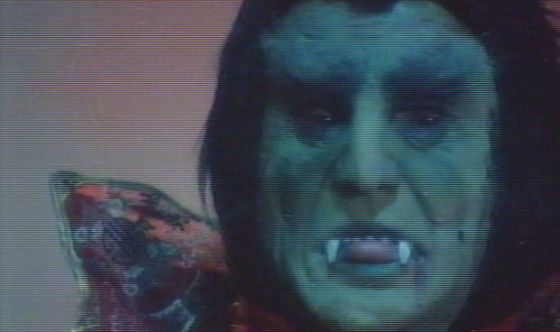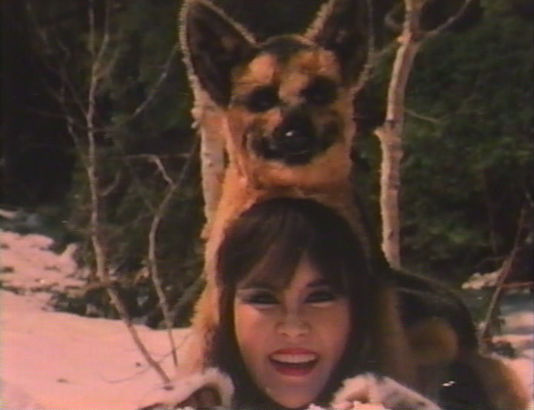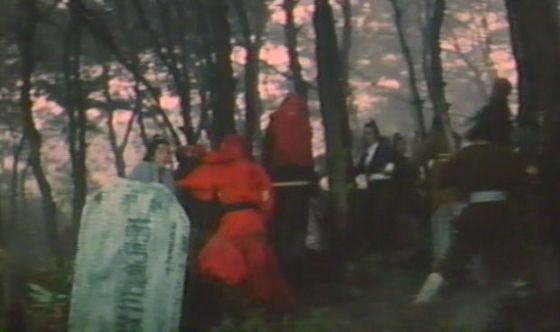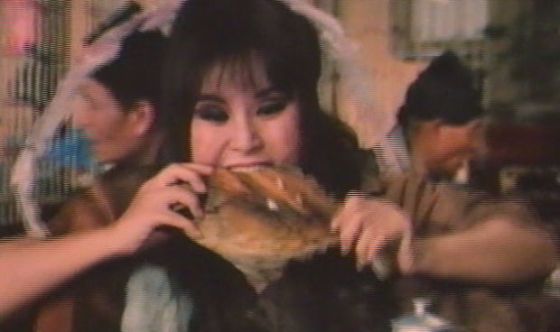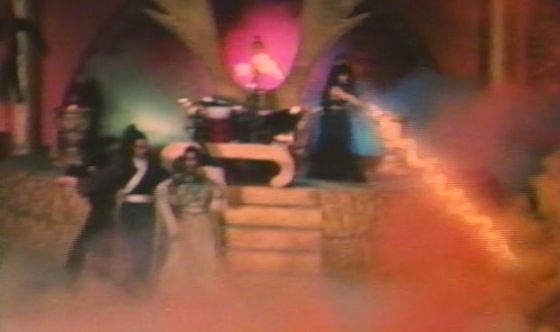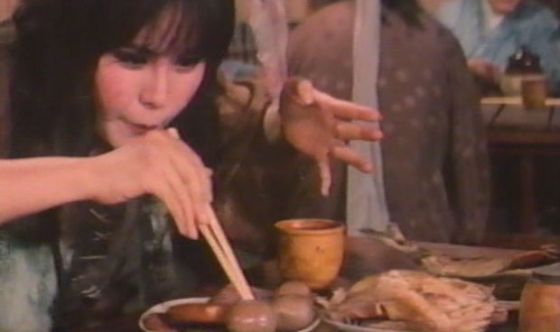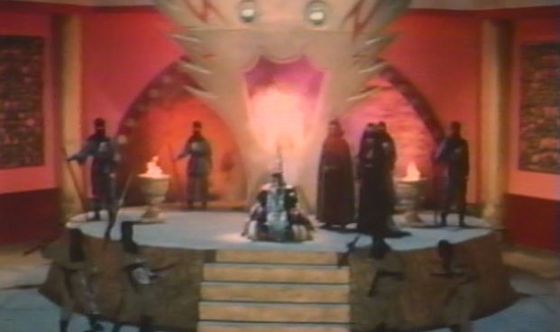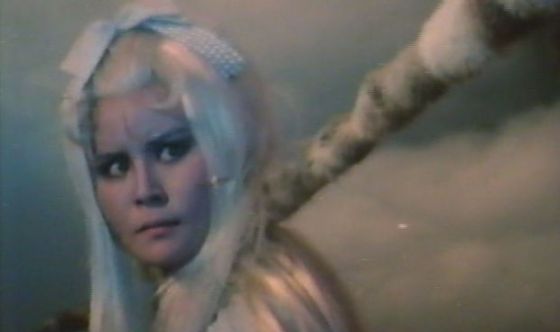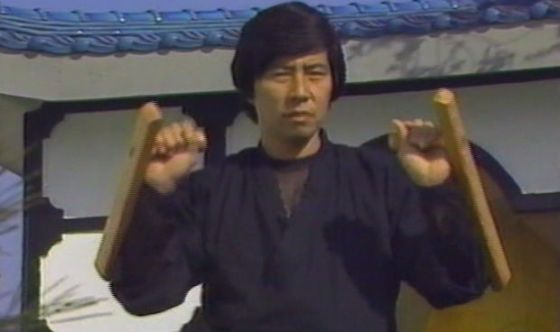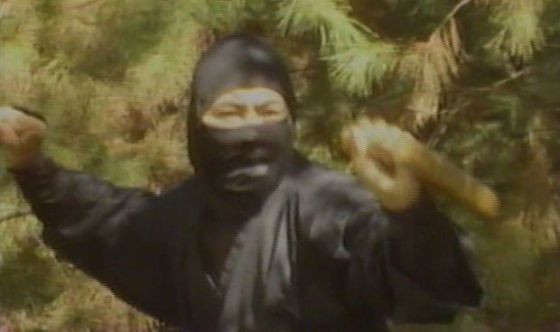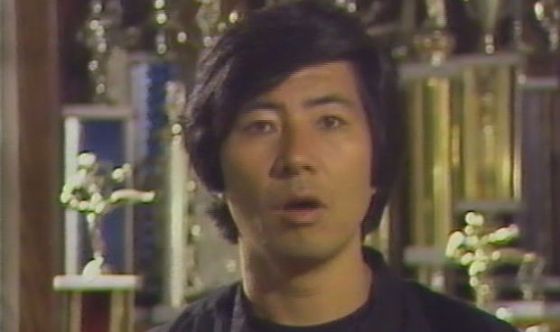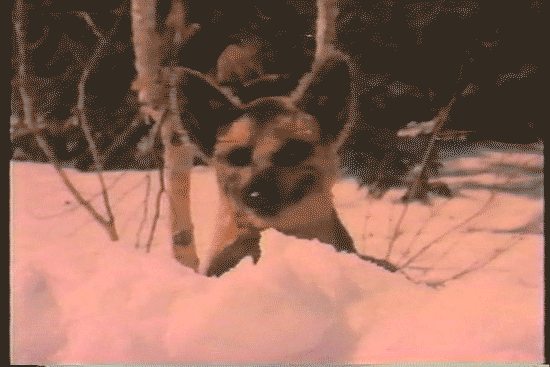Ninja Thunderbolt (1984) is a film of great historical importance to ninjologists as it marks the first time that Joseph Lai and Godfrey Ho spliced their own ninja footage into someone else’s movie, a technique that would spawn literally hundreds of films throughout the 80s. The idea came when Lai attended Cannes one year and saw how well Enter The Ninja was selling. His distribution company, IFD, had already been redubbing and recutting Asian martial arts films for the international market but the ninja boom inspired him to greater goals. Lai couldn’t afford to make a full length ninja film so hired Richard Harrison (a decent approximation of Franco Nero) and a small cast of Asian and Caucasian actors to shoot some 15 minutes of ninja footage with Godfrey Ho and then spliced it into an IFD-owned Taiwanese movie To Catch A Thief (1984, dir: Tommy Lee). Ho rejigged the storyline so it was now more ninja-centric and, with an English dub, Ninja Thunderbolt was unleashed on unsuspecting international markets (many of whom believed it was one whole film). We also start to see IFD having sneaky fun in the credits. They’re full, as always, of made up names but also include an actor called “Jackie Chan”. Obviously, the famous Jackie Chan isn’t anywhere to be seen (and no one will ever know which of the many anons running around in this apparently shares his name) but it didn’t stop most VHS covers broadcasting his name on the front and I’m sure didn’t hurt the sales either…
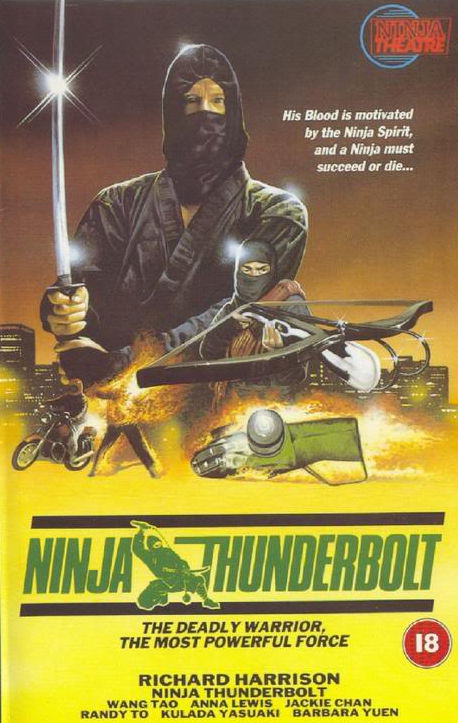
The film is more restrained than the series became after Ho began to exercise the full extent of his imagination, but the seeds are there for the ninjoid craziness that we all know and love. The film opens with a gloriously dramatic sequence of ninjas sat in a temple while a Master in heavy eyeliner dictates the rules for ninjas. These are a heady set of demands that basically say that everyone has to die and even takes that logic as far as “When the Gods are angry, we must kill the Gods!” This credo also proclaims that “to die the death of a ninja is a glorious way to die” (very Morrissey) and is interesting in that much of what’s said here including the existence of a hitherto never-documented “Ninja Empire” lays down the template for Ho’s ninja world. It is precisely the kind of quasi-mystical ninja hokum that we ninjologists live for and a beautiful start.
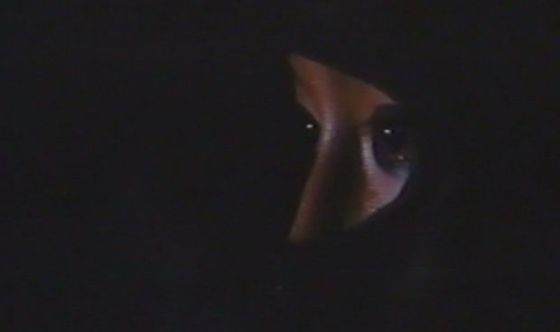
Unfortunately, when we cut to footage from To Catch A Thief, the pace drops a little. The first six minutes are just a guy in a ninja suit ninjing in the dark as he abseils into a building to steal The Jade Horse (a precious artefact) from a safe. It’s a slow, laborious process (possibly the most realistic depiction of ninja-work to date?) and badly lit, and this particular brand of tedium will be familiar to anyone who’s seen Ninja Apocalypse (original title : Impossible Woman), another film shot by Tommy Lee around the same time, featuring many of the same stars and a similar storyline.
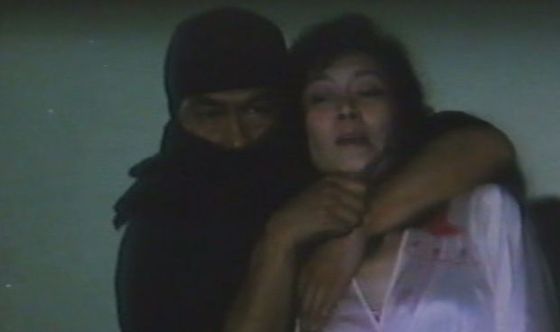
As the story grinds on, we’re introduced to various characters all trying to get their hands on The Jade Horse and – as with Ninja Apocalypse – Lee fails to really give us a single protagonist. Instead, the story flits between scenes as Inspector Wong (played by Don Wong, a bonafide kung fu star apparently just doing a favour for his friend Lee who only paid him with “a new leather jacket”), a no-nonsense insurance agent, a ninja and a master criminal called Jackal Chan (ha! they really had the guns out for Chan, eh?) all duke it out for the Horse.The insurance agent (not sure who plays her, thanks to the crazy credits) is by far the most compelling character on account of how she frequently ends business meetings with a fight, but she’s not in it anywhere near enough…
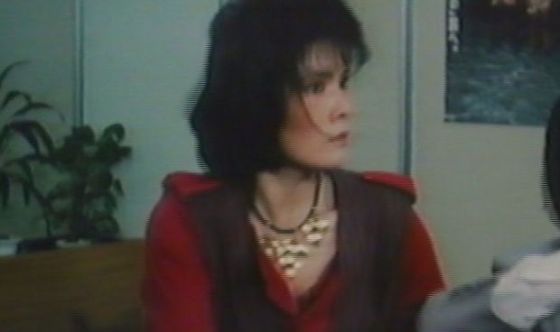
Tommy Lee’s from a choreography background and it shows. He manages some impressive low budget car stunts, tons of stuff explodes and his crew risk their lives hanging off cars, riding bikes where they really shouldn’t go, skiing down mountains and setting themselves on fire (he often worked under the name “Daredevil Stunt Squad”). So although the footage from To Catch A Thief is glacially paced, atrociously shot and hard to follow, you do get at least some reasonable bang for your bokken. There’s also very explicit sex (censored from the Chinese release of To Catch A Thief but reinserted into Ninja Thunderbolt for the international market!) which will have even experienced exploitation viewers gasping with disbelief at one point in terms of how far it goes.
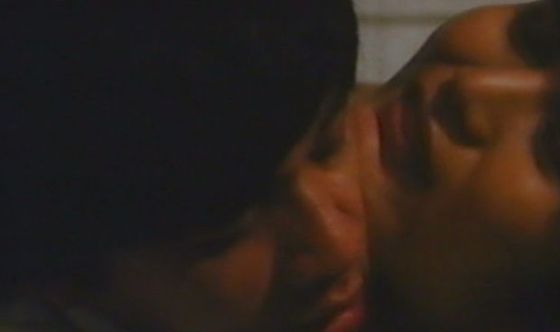
Even so, Lee’s film is mostly not great. The only scene that’s truly legendary is the one where a troupe of ninjas on rollerskates chase Don Wong, in a random, tiny space-age style car, down a street. I have no idea how this scene made it in. For years, I thought maybe it was Godfrey Ho and he’d rehired Wong for the day to shoot it, because it bears the mark of his weirdness, but it seems that it’s Lee’s footage and I have to give him credit for one of the most memorable ninja scenes of all time; even if it bears no relation to the rest of his film (Wong is never seen driving his space-age car again!).
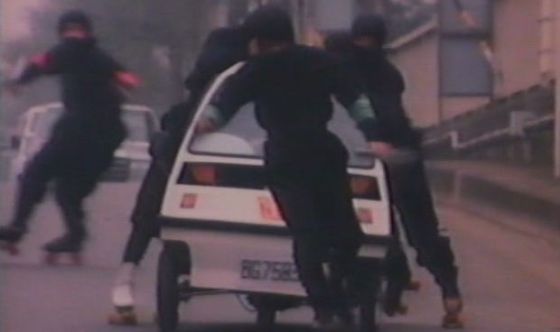
All this footage (and the bulk of Ninja Thunderbolt is lifted straight from To Catch A Thief) gets tied together with Ho’s stuff because Richard Harrison is supposedly Inspector Wong’s boss – a gentleman, a policeman and (of course) a ninja. Hysterically, his character name is “Richard Lawman” which is a stroke of genius. There’s some clever editing too as they talk to each other across the movies and IFD have wisely kept the plot crossover simple to make it feel like a smooth transition. We don’t actually see that much of “Richard Lawman” until the end of the movie where he gets a note that says “TOMORROW-OU FOREST NINJA THUNDERBOLT” (say what?) and has to go fight for the honour of the Ninja Empire in a climactic showdown that gives Ho the chance to shine.
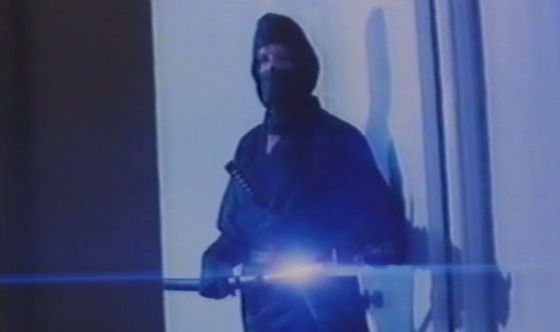
What’s weird is how much more technically competent and entertaining Ho’s footage is, compared to Lee’s. We get the now-iconic (and oft revisited) scene of Harrison running up a hill to classic 80s synth music (Play At Your Own Risk by Planet Patrol, copyright be damned!) before reaching the top and screaming “NINJAAAAAAA!!!” at the sky. Harrison, in the days before he became jaded by the Hong Kong film industry and got forced into neon pink threads, pointy shoulder-pads and wacky headbands, gives a hugely spirited performance and the ninjing in the climax is top-rate. There are loads of smoke bombs, flying shurikens (unless you watch the censored UK VHS), mad acrobatics and swordplay. It also wraps up less abruptly than the later films, allowing Harrison to lay down some essential ninja life lessons! Ninja Thunderbolt may not have quite the madness of the later IFD efforts and the source film’s slowness lets it down but it’s still an important work, a vital addition to any ninjologist’s collection and worth your time for the rollerskates scene. I mean, really… look at this…

